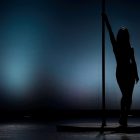The fascinating thing about a live event experience is that everyone can appreciate beautiful visuals. From LED stage lighting to artistically developed stages, there’s something to capture everyone’s attention. And while a good deal could be spent on the transformative nature of lighting and the illusionary effects of a physically filled out stage, the real beauty is in the details – the sonic landscapes fully immersing you into the experience.
Good visuals may be one thing, but there’s a limit as to how much connection our motor neurons can create. Our bodies and minds are hardwired to respond viscerally to different sounds. From the bleak, unremitting sadness of a Leonard Cohen concert and his use of empty space, stirring the soul in the silences between his lyrics, to the challenges of any festival season – elevating itself through the crisp and deep sounds of the music, reverberating through the humdrum and white noise threatening to diminish the sonic experience with mighty grandeur.
Sound speaks more to our emotions than our intellect, because sounds don’t communicate concepts and symbols, but rather communicate feelings and moods. A great soundscape is half the artistry of a moving, memorable live event experience.
Why Sound Design Is Important

To deliver such a moving sensory experience, a live event requires one thing – the complete understanding of space, environment, room acoustics, and size of the audience. After all, the venue itself could be a fine musical instrument, an indissoluble element of the hearing experience. Venues are acoustic architectures that interact and enhance the sonic experience, and like any masterpiece that requires the finest artistic brushstrokes, live events need state-of-the-art sound systems and a master composer to imbue the experience with holistic sound that will linger long after the last encore is sung and the final note dissipates.
Music is an instinctive experience. Our bodies are sounding boards – our ears and mind acoustically interact better with the live event experience in a way that is diminished with earbuds or headphones. Live events provide an undiluted connection to the entrancing soundscapes that can’t be found digitally. Good sound design adds sensory reinforcement to the live event, shaping the experience in ways you may not consciously realize at the time.
As technology rapidly advances, new experimental platforms open themselves up to opportunities to engage with audiophiles and create experiences. Creativity and technology merge with good sound design, harmonically balancing the importance of atmospheric energy and a three-dimensional audio landscape.
Sound Transcends Limitations

So how do live events create this sensory bridge? By creating simple and integrated solutions that seamlessly encapsulate an audio visual encounter with clean, open, and dynamic sound. Exceptional sound design has minimal distortion, low noise floor and high headroom, providing the highest quality of audio to communicate with the audience. Such an immersive assembly of soundscapes brought on by noteworthy sound design, livens dull events, inspires specific moods, and bring unadulterated energy to any venue.
Much like Glastonbury or Coachella today, Woodstock, of festivals past, was a cultural and narrative live event experience. The constant undertow of Woodstock may have been peace and love, but two things will forever reverberate from the general presence of Woodstock – its performances which have withstood the test of time, and the undeniable electricity of such a cultural event.
That’s what exceptional sound design does. Professional audio visual systems delivering unparalleled sound artistry demand your attention even when you disassociate the rest of your senses. A good sound design setup resonates through your subconscious, imploring you to explore the colorful sonic soundscape presented before you. The chords, the rhythm, the pattern of music, all of it moves your psyche, reaching into your emotions with thunderous movement, while you stand or sit transfixed. It anchors memories, forever living in your subconscious, waiting to peek out again, releasing waves of nostalgia on the first struck chord or bass drop that demands and elicits a response.
Sound Is Three-Dimensional

The relationship between the stage and audio is more paramount than ever. In the realms of theatre, sound design was previously viewed as a mere technical skill, rather than an art form, much like how a painter or sculptor would infuse their canvas with artistic spirit. In fact, it wasn’t until 2004 that sound design finally received its accolades, becoming a recognized category in the Laurence Olivier Awards.
Great sound design in theatre conjures sonic storms, engulfing theatre practitioners with audio narratives that enrich the stage presence. And much like theatre, concert halls and clubs are experimental approaches to unique sounds, utilizing interesting designer audio video tools to allow individuals to interact with the acoustic architecture within confinements of the venue.
There is signature warmth in the audio as it rebounds and resonates through the archived annals of a venue’s walls, echoing the former glory of expired performances and recordings. In such venues, great sound design supercharges the live event, allowing us to fully immerse ourselves into the experience. Because good sound is heard, but great sound is felt. After all, we hear with our entire body, and to restrict such a symphonic masterpiece (with its low-hum sub-bass frequencies, hi-fi idiosyncratic sounds effects, or even the stripped-down sets of keyboards, drums, and assorted plucked strings) to be distilled and reproduced into a singular interaction through earbuds, we lose the magic and beautiful of a sensory-charged experience.
Sonically animated live events aren’t simply restricted to music festivals, theatres, concert halls, and even clubs. Venues like Native American Pow Wows, coffee shop acoustic sessions, and even tiny desk concerts pulse with a certain energy, imploring to take you on an auditory journey that transcends time and space. It’s an intimate invitation to tune yourself and listen with the naked ear.
And unlike many other mediums of artistic expression, live events are truly unique forms of entertainment – they cannot be duplicated. Live events aren’t just a medium on the visual; they are a unique interplay between sound, light and picture. Sound touches the subconscious, bypassing the logical and intellectual surfaces.
Contrary to the other sensory experiences, sound communicates with us on a visceral and emotional level. And to deliver an experience that hums evocative memories and elicits emotional responses long after the event expires, sound engineers, AV system integrators, and state-of-the-art sound designs manipulate the sonic dynamics to convey a truly borderless experience.





























